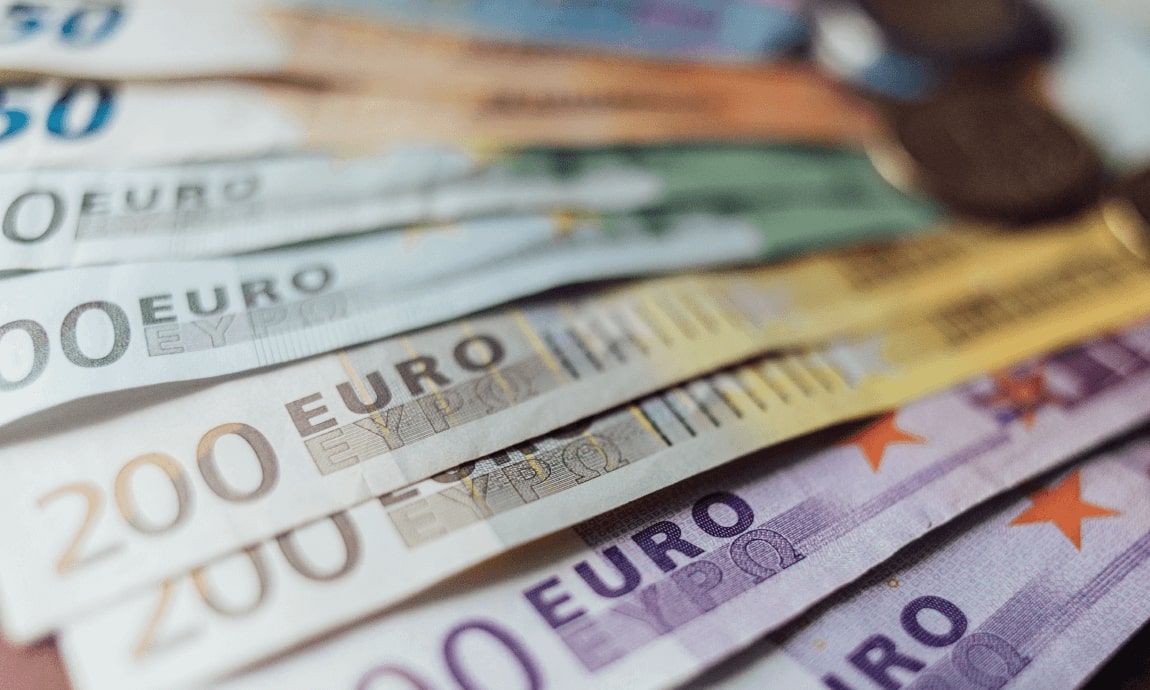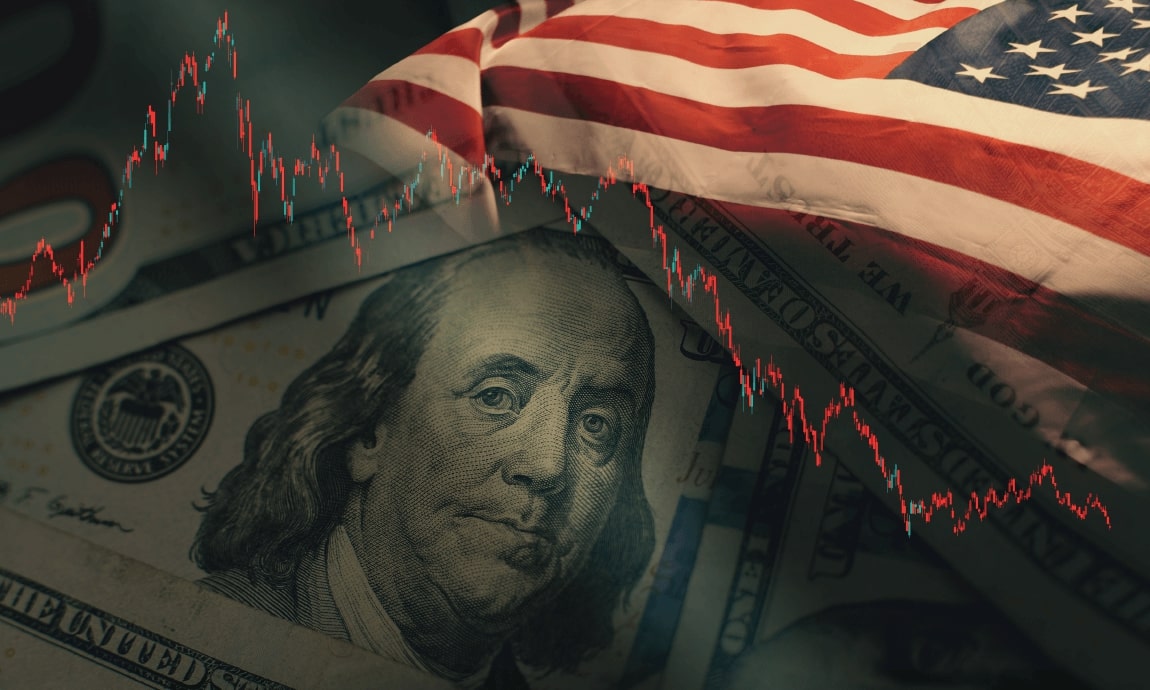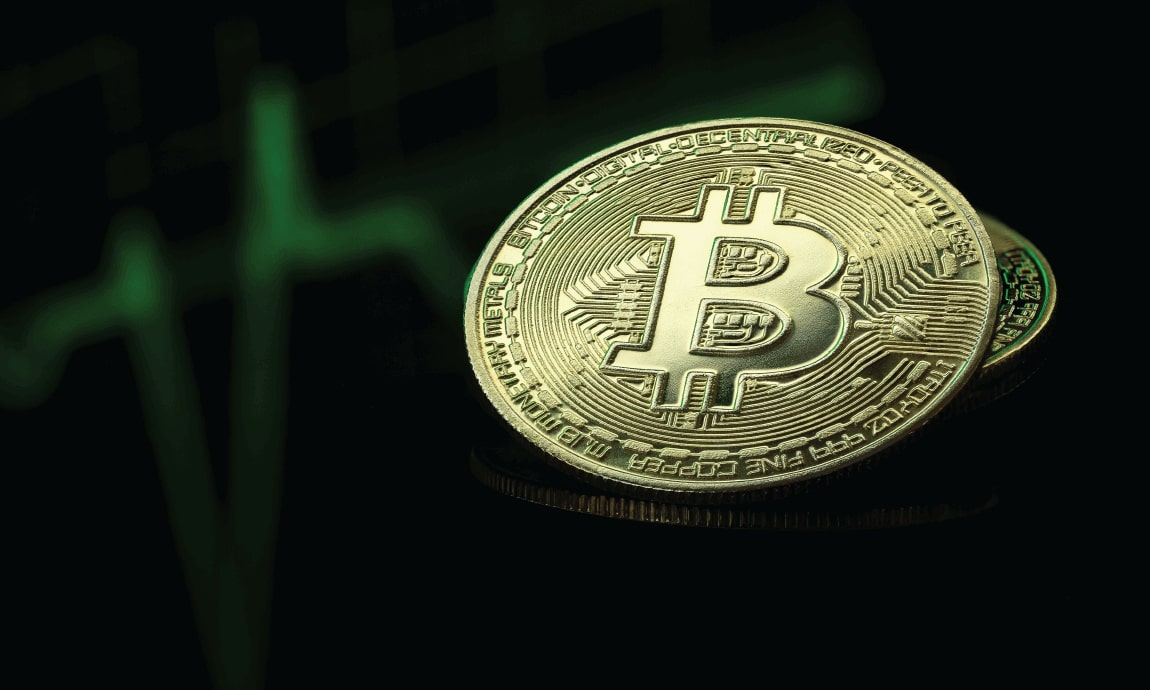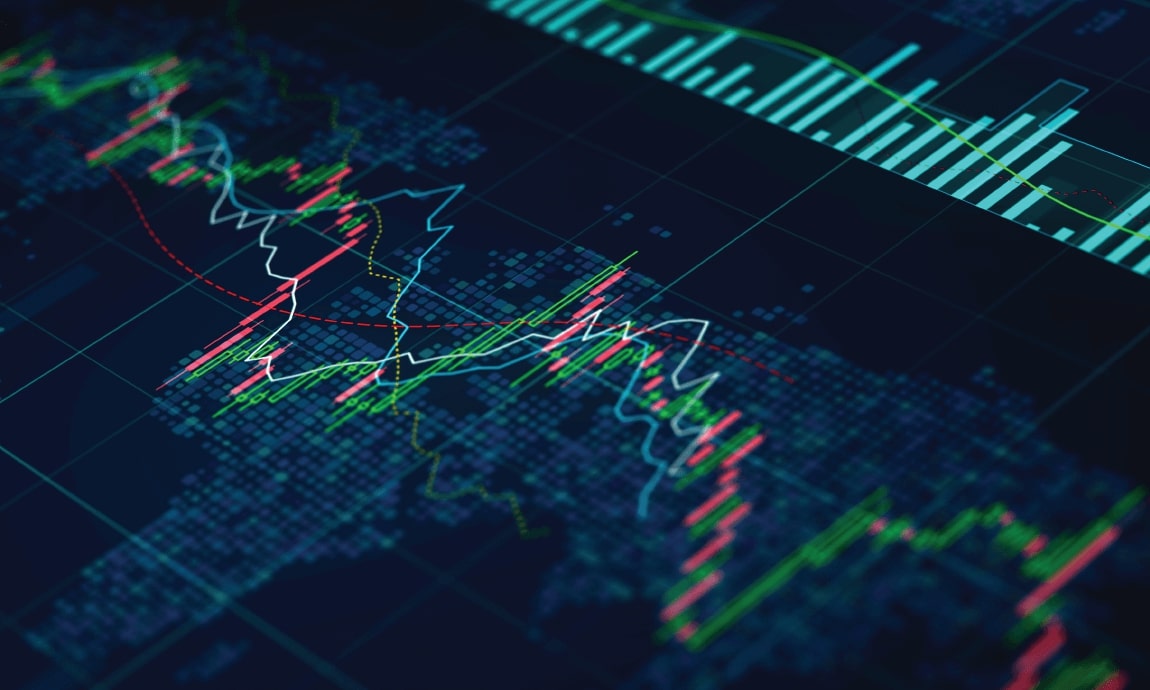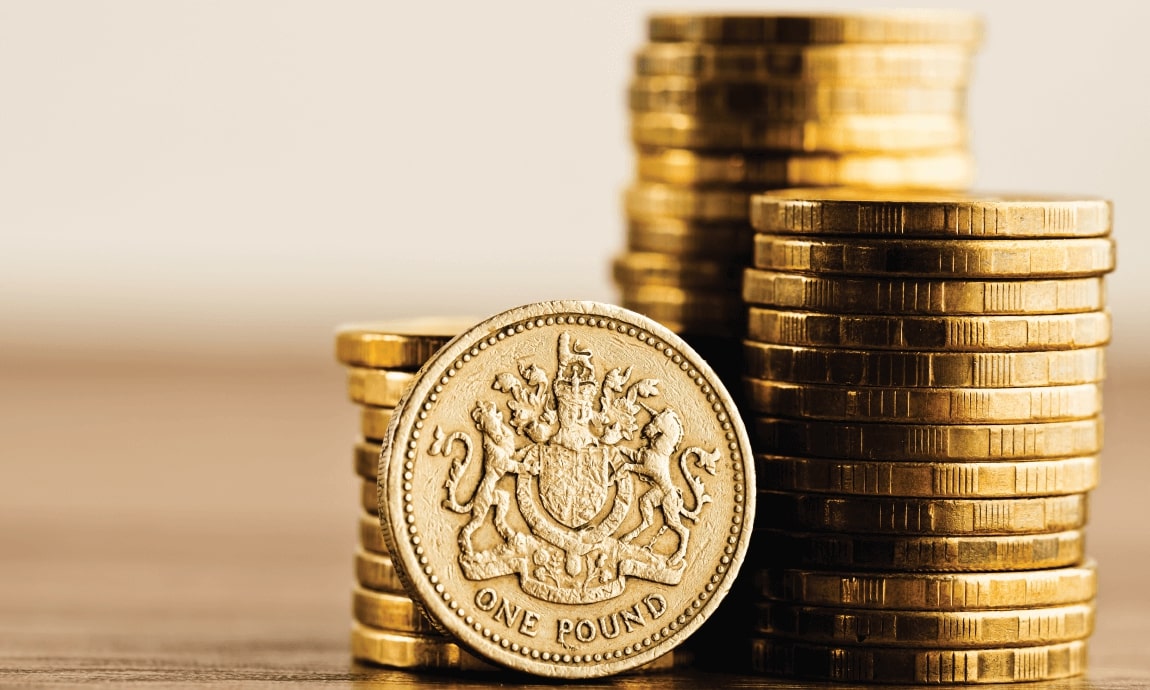Silver investors are watching bank earnings this week for more insight into the health of the sector and the possibility of a coming recession, to continue its uptrend toward 2022’s highs of $27/oz.
But, what is bullish for Silver and Gold is that the recent weaker-than-expected U.S. economic data shows that the largest economy in the world has begun to lose momentum, intensifying bets that the Fed’s next increase will be its last.
Silver investors are watching bank earnings this week for more insight into the health of the sector and the possibility of a coming recession, to continue its uptrend toward 2022’s highs of $27/oz.
But, what is bullish for Silver and Gold is that the recent weaker-than-expected U.S. economic data shows that the largest economy in the world has begun to lose momentum, intensifying bets that the Fed’s next increase will be its last.
Silver investors are watching bank earnings this week for more insight into the health of the sector and the possibility of a coming recession, to continue its uptrend toward 2022’s highs of $27/oz.
Analysts expect Federal Reserve to hike interest rates by another 25 basis points at the next FOMC monetary policy meeting on May 2-3 to curb persistent inflation.
But, what is bullish for Silver and Gold is that the recent weaker-than-expected U.S. economic data shows that the largest economy in the world has begun to lose momentum, intensifying bets that the Fed’s next increase will be its last.
Silver investors are watching bank earnings this week for more insight into the health of the sector and the possibility of a coming recession, to continue its uptrend toward 2022’s highs of $27/oz.
Analysts expect Federal Reserve to hike interest rates by another 25 basis points at the next FOMC monetary policy meeting on May 2-3 to curb persistent inflation.
But, what is bullish for Silver and Gold is that the recent weaker-than-expected U.S. economic data shows that the largest economy in the world has begun to lose momentum, intensifying bets that the Fed’s next increase will be its last.
Silver investors are watching bank earnings this week for more insight into the health of the sector and the possibility of a coming recession, to continue its uptrend toward 2022’s highs of $27/oz.
The dollar-denominated Silver has also gained traction in the last weeks following the weakness of the U.S. dollar given the expectation for a less hawkish Federal Reserve due to signs of worsening economic conditions, which is making it less expensive for foreign buyers, while the retreating U.S. Treasury yields are making the non-yielding Silver more attractive as an inflation-hedge for the investors.
Analysts expect Federal Reserve to hike interest rates by another 25 basis points at the next FOMC monetary policy meeting on May 2-3 to curb persistent inflation.
But, what is bullish for Silver and Gold is that the recent weaker-than-expected U.S. economic data shows that the largest economy in the world has begun to lose momentum, intensifying bets that the Fed’s next increase will be its last.
Silver investors are watching bank earnings this week for more insight into the health of the sector and the possibility of a coming recession, to continue its uptrend toward 2022’s highs of $27/oz.
The dollar-denominated Silver has also gained traction in the last weeks following the weakness of the U.S. dollar given the expectation for a less hawkish Federal Reserve due to signs of worsening economic conditions, which is making it less expensive for foreign buyers, while the retreating U.S. Treasury yields are making the non-yielding Silver more attractive as an inflation-hedge for the investors.
Analysts expect Federal Reserve to hike interest rates by another 25 basis points at the next FOMC monetary policy meeting on May 2-3 to curb persistent inflation.
But, what is bullish for Silver and Gold is that the recent weaker-than-expected U.S. economic data shows that the largest economy in the world has begun to lose momentum, intensifying bets that the Fed’s next increase will be its last.
Silver investors are watching bank earnings this week for more insight into the health of the sector and the possibility of a coming recession, to continue its uptrend toward 2022’s highs of $27/oz.
The collapse of two U.S. regional banks in early March and the fears of an imminent banking crisis have triggered a month-long rally in gold and silver, as traders rushed into traditional safe havens.
The dollar-denominated Silver has also gained traction in the last weeks following the weakness of the U.S. dollar given the expectation for a less hawkish Federal Reserve due to signs of worsening economic conditions, which is making it less expensive for foreign buyers, while the retreating U.S. Treasury yields are making the non-yielding Silver more attractive as an inflation-hedge for the investors.
Analysts expect Federal Reserve to hike interest rates by another 25 basis points at the next FOMC monetary policy meeting on May 2-3 to curb persistent inflation.
But, what is bullish for Silver and Gold is that the recent weaker-than-expected U.S. economic data shows that the largest economy in the world has begun to lose momentum, intensifying bets that the Fed’s next increase will be its last.
Silver investors are watching bank earnings this week for more insight into the health of the sector and the possibility of a coming recession, to continue its uptrend toward 2022’s highs of $27/oz.
The collapse of two U.S. regional banks in early March and the fears of an imminent banking crisis have triggered a month-long rally in gold and silver, as traders rushed into traditional safe havens.
The dollar-denominated Silver has also gained traction in the last weeks following the weakness of the U.S. dollar given the expectation for a less hawkish Federal Reserve due to signs of worsening economic conditions, which is making it less expensive for foreign buyers, while the retreating U.S. Treasury yields are making the non-yielding Silver more attractive as an inflation-hedge for the investors.
Analysts expect Federal Reserve to hike interest rates by another 25 basis points at the next FOMC monetary policy meeting on May 2-3 to curb persistent inflation.
But, what is bullish for Silver and Gold is that the recent weaker-than-expected U.S. economic data shows that the largest economy in the world has begun to lose momentum, intensifying bets that the Fed’s next increase will be its last.
Silver investors are watching bank earnings this week for more insight into the health of the sector and the possibility of a coming recession, to continue its uptrend toward 2022’s highs of $27/oz.
Silver, Weekly chart
The collapse of two U.S. regional banks in early March and the fears of an imminent banking crisis have triggered a month-long rally in gold and silver, as traders rushed into traditional safe havens.
The dollar-denominated Silver has also gained traction in the last weeks following the weakness of the U.S. dollar given the expectation for a less hawkish Federal Reserve due to signs of worsening economic conditions, which is making it less expensive for foreign buyers, while the retreating U.S. Treasury yields are making the non-yielding Silver more attractive as an inflation-hedge for the investors.
Analysts expect Federal Reserve to hike interest rates by another 25 basis points at the next FOMC monetary policy meeting on May 2-3 to curb persistent inflation.
But, what is bullish for Silver and Gold is that the recent weaker-than-expected U.S. economic data shows that the largest economy in the world has begun to lose momentum, intensifying bets that the Fed’s next increase will be its last.
Silver investors are watching bank earnings this week for more insight into the health of the sector and the possibility of a coming recession, to continue its uptrend toward 2022’s highs of $27/oz.
Silver, Weekly chart
The collapse of two U.S. regional banks in early March and the fears of an imminent banking crisis have triggered a month-long rally in gold and silver, as traders rushed into traditional safe havens.
The dollar-denominated Silver has also gained traction in the last weeks following the weakness of the U.S. dollar given the expectation for a less hawkish Federal Reserve due to signs of worsening economic conditions, which is making it less expensive for foreign buyers, while the retreating U.S. Treasury yields are making the non-yielding Silver more attractive as an inflation-hedge for the investors.
Analysts expect Federal Reserve to hike interest rates by another 25 basis points at the next FOMC monetary policy meeting on May 2-3 to curb persistent inflation.
But, what is bullish for Silver and Gold is that the recent weaker-than-expected U.S. economic data shows that the largest economy in the world has begun to lose momentum, intensifying bets that the Fed’s next increase will be its last.
Silver investors are watching bank earnings this week for more insight into the health of the sector and the possibility of a coming recession, to continue its uptrend toward 2022’s highs of $27/oz.
Silver, Weekly chart
The collapse of two U.S. regional banks in early March and the fears of an imminent banking crisis have triggered a month-long rally in gold and silver, as traders rushed into traditional safe havens.
The dollar-denominated Silver has also gained traction in the last weeks following the weakness of the U.S. dollar given the expectation for a less hawkish Federal Reserve due to signs of worsening economic conditions, which is making it less expensive for foreign buyers, while the retreating U.S. Treasury yields are making the non-yielding Silver more attractive as an inflation-hedge for the investors.
Analysts expect Federal Reserve to hike interest rates by another 25 basis points at the next FOMC monetary policy meeting on May 2-3 to curb persistent inflation.
But, what is bullish for Silver and Gold is that the recent weaker-than-expected U.S. economic data shows that the largest economy in the world has begun to lose momentum, intensifying bets that the Fed’s next increase will be its last.
Silver investors are watching bank earnings this week for more insight into the health of the sector and the possibility of a coming recession, to continue its uptrend toward 2022’s highs of $27/oz.
The prices of the “white gold” were boosted last week toward the $26/oz territory by a flow of safety bets on the precious metal’s sector amid recession concerns, and softening U.S. economic and inflation data, with the price of Gold also consolidating above the key $2,000/oz psychological level, after it hit a yearly high of $2,050/oz on the same period.
Silver, Weekly chart
The collapse of two U.S. regional banks in early March and the fears of an imminent banking crisis have triggered a month-long rally in gold and silver, as traders rushed into traditional safe havens.
The dollar-denominated Silver has also gained traction in the last weeks following the weakness of the U.S. dollar given the expectation for a less hawkish Federal Reserve due to signs of worsening economic conditions, which is making it less expensive for foreign buyers, while the retreating U.S. Treasury yields are making the non-yielding Silver more attractive as an inflation-hedge for the investors.
Analysts expect Federal Reserve to hike interest rates by another 25 basis points at the next FOMC monetary policy meeting on May 2-3 to curb persistent inflation.
But, what is bullish for Silver and Gold is that the recent weaker-than-expected U.S. economic data shows that the largest economy in the world has begun to lose momentum, intensifying bets that the Fed’s next increase will be its last.
Silver investors are watching bank earnings this week for more insight into the health of the sector and the possibility of a coming recession, to continue its uptrend toward 2022’s highs of $27/oz.
The prices of the “white gold” were boosted last week toward the $26/oz territory by a flow of safety bets on the precious metal’s sector amid recession concerns, and softening U.S. economic and inflation data, with the price of Gold also consolidating above the key $2,000/oz psychological level, after it hit a yearly high of $2,050/oz on the same period.
Silver, Weekly chart
The collapse of two U.S. regional banks in early March and the fears of an imminent banking crisis have triggered a month-long rally in gold and silver, as traders rushed into traditional safe havens.
The dollar-denominated Silver has also gained traction in the last weeks following the weakness of the U.S. dollar given the expectation for a less hawkish Federal Reserve due to signs of worsening economic conditions, which is making it less expensive for foreign buyers, while the retreating U.S. Treasury yields are making the non-yielding Silver more attractive as an inflation-hedge for the investors.
Analysts expect Federal Reserve to hike interest rates by another 25 basis points at the next FOMC monetary policy meeting on May 2-3 to curb persistent inflation.
But, what is bullish for Silver and Gold is that the recent weaker-than-expected U.S. economic data shows that the largest economy in the world has begun to lose momentum, intensifying bets that the Fed’s next increase will be its last.
Silver investors are watching bank earnings this week for more insight into the health of the sector and the possibility of a coming recession, to continue its uptrend toward 2022’s highs of $27/oz.
Silver prices hovered above the $25/oz key level on Tuesday morning, coming off a winning week in which it hit a yearly high of $26/oz last Friday, before retreating to the current levels.
The prices of the “white gold” were boosted last week toward the $26/oz territory by a flow of safety bets on the precious metal’s sector amid recession concerns, and softening U.S. economic and inflation data, with the price of Gold also consolidating above the key $2,000/oz psychological level, after it hit a yearly high of $2,050/oz on the same period.
Silver, Weekly chart
The collapse of two U.S. regional banks in early March and the fears of an imminent banking crisis have triggered a month-long rally in gold and silver, as traders rushed into traditional safe havens.
The dollar-denominated Silver has also gained traction in the last weeks following the weakness of the U.S. dollar given the expectation for a less hawkish Federal Reserve due to signs of worsening economic conditions, which is making it less expensive for foreign buyers, while the retreating U.S. Treasury yields are making the non-yielding Silver more attractive as an inflation-hedge for the investors.
Analysts expect Federal Reserve to hike interest rates by another 25 basis points at the next FOMC monetary policy meeting on May 2-3 to curb persistent inflation.
But, what is bullish for Silver and Gold is that the recent weaker-than-expected U.S. economic data shows that the largest economy in the world has begun to lose momentum, intensifying bets that the Fed’s next increase will be its last.
Silver investors are watching bank earnings this week for more insight into the health of the sector and the possibility of a coming recession, to continue its uptrend toward 2022’s highs of $27/oz.
Silver prices hovered above the $25/oz key level on Tuesday morning, coming off a winning week in which it hit a yearly high of $26/oz last Friday, before retreating to the current levels.
The prices of the “white gold” were boosted last week toward the $26/oz territory by a flow of safety bets on the precious metal’s sector amid recession concerns, and softening U.S. economic and inflation data, with the price of Gold also consolidating above the key $2,000/oz psychological level, after it hit a yearly high of $2,050/oz on the same period.
Silver, Weekly chart
The collapse of two U.S. regional banks in early March and the fears of an imminent banking crisis have triggered a month-long rally in gold and silver, as traders rushed into traditional safe havens.
The dollar-denominated Silver has also gained traction in the last weeks following the weakness of the U.S. dollar given the expectation for a less hawkish Federal Reserve due to signs of worsening economic conditions, which is making it less expensive for foreign buyers, while the retreating U.S. Treasury yields are making the non-yielding Silver more attractive as an inflation-hedge for the investors.
Analysts expect Federal Reserve to hike interest rates by another 25 basis points at the next FOMC monetary policy meeting on May 2-3 to curb persistent inflation.
But, what is bullish for Silver and Gold is that the recent weaker-than-expected U.S. economic data shows that the largest economy in the world has begun to lose momentum, intensifying bets that the Fed’s next increase will be its last.
Silver investors are watching bank earnings this week for more insight into the health of the sector and the possibility of a coming recession, to continue its uptrend toward 2022’s highs of $27/oz.


